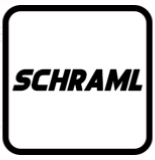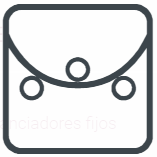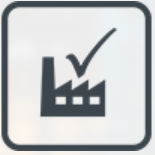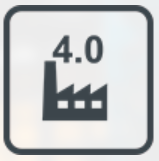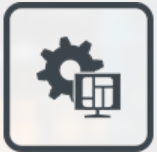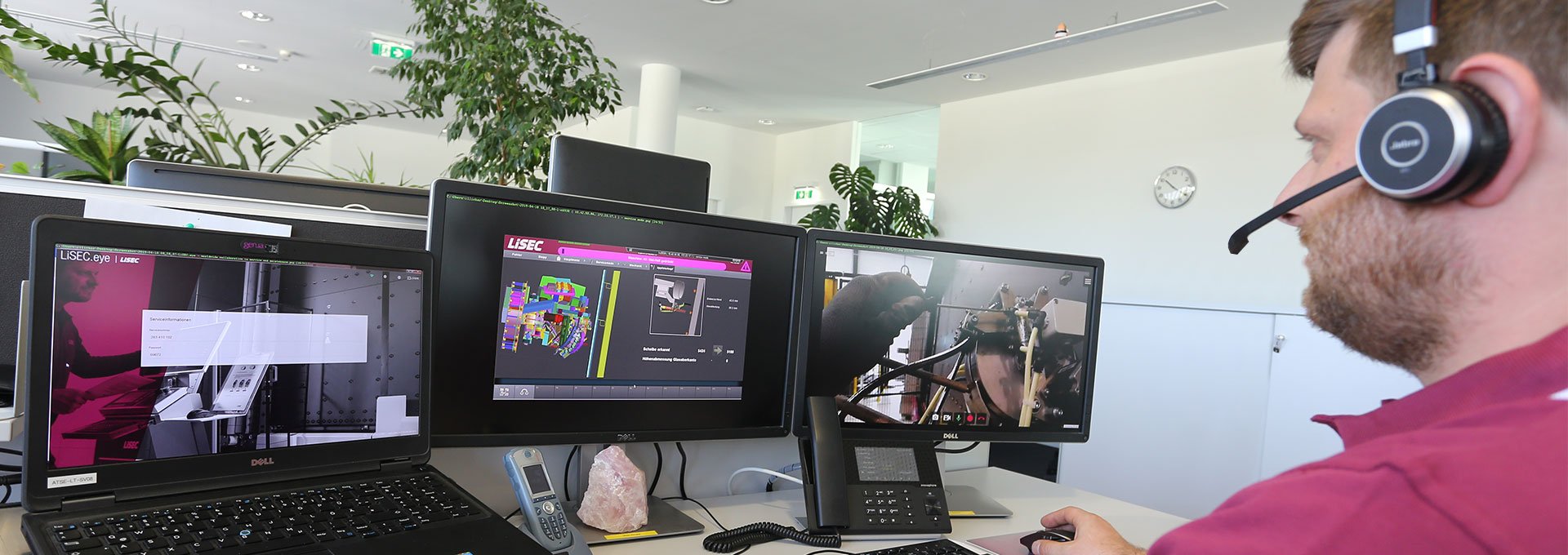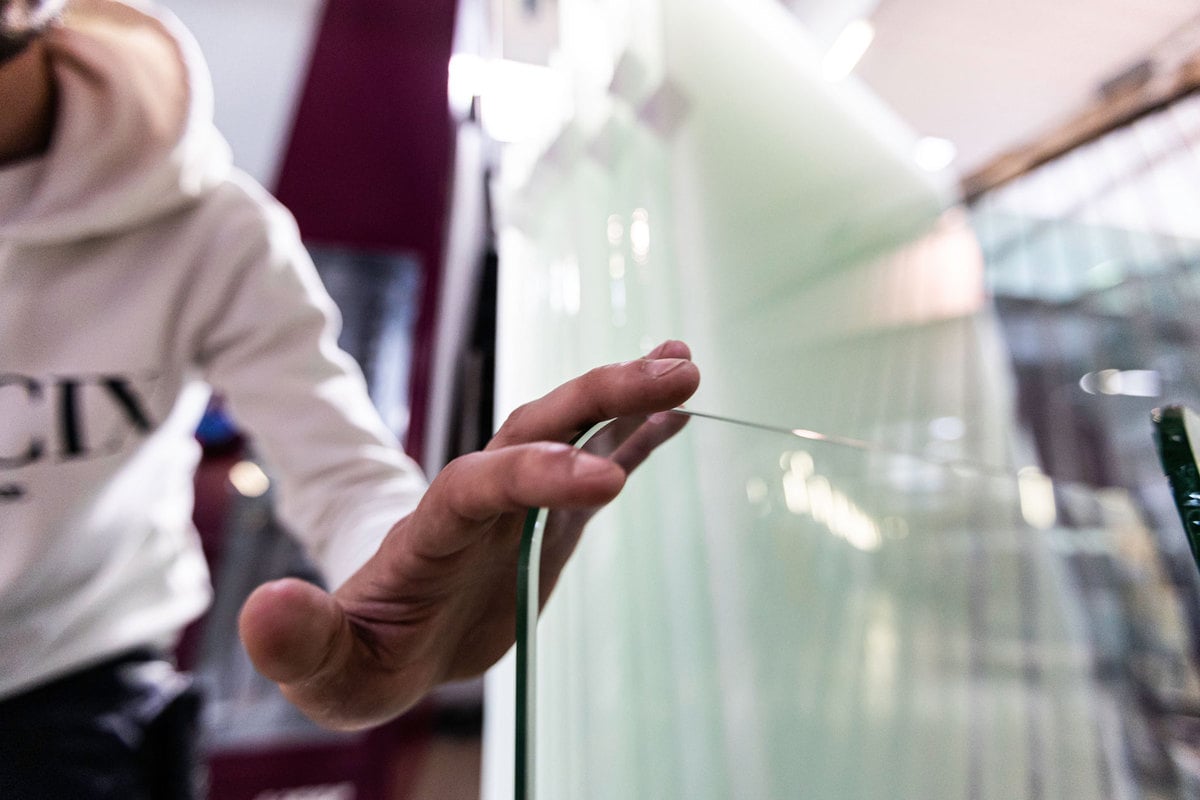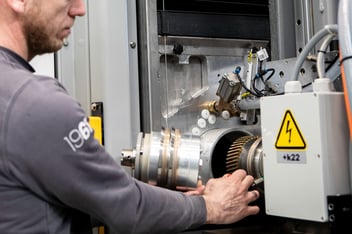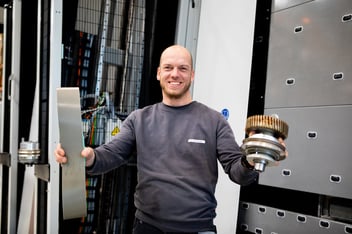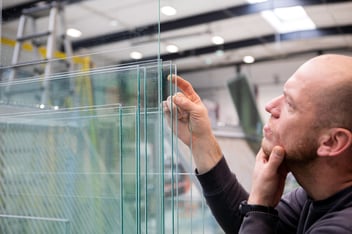Polishing glass edges is the most sensitive task in glass edge processing because it largely involves visible edges, which means that almost no tolerances or errors are admissible. The target: Very high surface quality (matt areas are not permitted here), as well as rapid throughput times and extensive flexibility. Prior to this work step, the edge must be ground to the requisite dimensions. Rough and fine grinding take place initially with peripheral wheels, followed by polishing with stone peripheral wheels. It is specifically due to this large number of process steps that glass edge polishing is so elaborate and complex. For this reason, glass edge polishing only takes place if the glass components are to be used for decorative purposes or in furniture pieces and furnishings such as glass tables, frameless glass sheets, mirrors, sliding glass walls, display cabinets or display windows.
However, polishing not only produces the best optical quality of the glass edges; the process can also greatly improve the edge strength, because this form of glass edge processing virtually eliminates all micro-cracks produced during cutting. The polished edge is characterised by a continuous shine over the entire surface, whereby longitudinal grooves are permissible according to standards.
A major advantage of vertical glass edge polishing machines is their flexibility with varying batch sizes and glass thicknesses. Vertical systems have a minimum of one and no more than two processing heads, and are generally also equipped with a comprehensive automatic tool magazine. The machine changes the tools automatically without any operator intervention, according to the glass thickness. By comparison, horizontal systems have up to 35 machining heads (grinding spindles). It goes without saying that it is always necessary to change all of the tools for a different glass thickness, and that this also results in much higher maintenance costs. Conversely, a vertical system is extremely flexible and requires little maintenance. Furthermore, these machines can also perform so-called corner bevelling after the polishing process. The corners - some of which are still sharp - are bevelled to avoid any danger of injury.
All-rounder in the flat glass industry – polishing from a batch size of 1
Flexibility in glass edge processing is essential in particular for producers of insulating glass, who are also active in the contract business and manufacture glass components for interior design products. As a general rule, the proportion of glass edges that need polishing is usually rather small. Vertical glass processing is therefore likely to be the ideal choice here too because it is not only fast and flexible, but can also handle all three glass edge processing steps - seaming, grinding and polishing - in equal measure. A large number of the peripheral wheels and polishing tools required are available in the tool magazine; they are automatically changed as and when necessary without interrupting production. This eliminates the need for constant transport from station to station, and saves a great deal of time and manual handling.
In numbers: Vertical glass edge processing is clearly more efficient and cost-effective up to a batch size of 1,000 units. Only with higher throughput rates is a horizontal polishing system advantageous - at least in terms of production throughput.
Saving space and water in production
Horizontal grinding and polishing systems (so-called double edgers) require considerably more water and space in production. Furthermore, the horizontal construction is open at the top, which leads to greater humidity in the factory hall, which in turn brings a higher risk of oxidation processes for coated glass lites sheets. The processing towers in vertical systems like LiSEC's EPS and MRX are optimally sealed. This keeps the evaporation and carry-over of water to an absolute minimum. The space required is significantly smaller, whilst interlinking with vertical logistics solutions and insulating glass lines is very straightforward.EPS – the vertical fully automatic grinding and polishing machine from LiSEC
The EPS has been specially designed for the professional production of ground and polished edges with the utmost in flexibility and the fastest process execution. The impressive cycle times increase continuously thanks to automatic sequence optimisation. An optional second grinding spindle can also be integrated, which delivers additional significant improvements in the cycle times. Furthermore, the EPS is additionally capable of polishing not only rectangles but also shapes and radii as standard. And all this entirely without tool changes during the process, provided that an automatic tool changer has also been integrated.
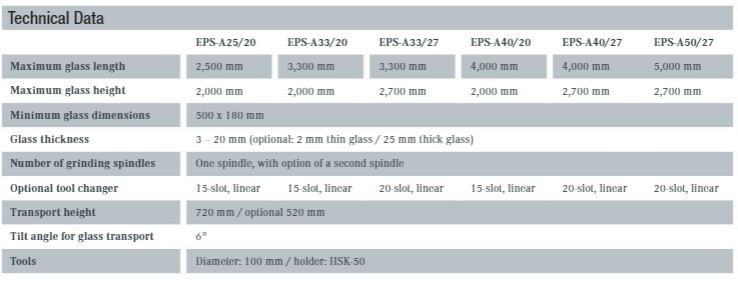 Technical data of LiSEC EPS-A grinding & polishing solution
Technical data of LiSEC EPS-A grinding & polishing solution
The advantages of the EPS at a glance:
- Extremely rapid cycle time
- Standard processing of shapes and radii
- Optimised maintenance and servicing
- Simple interlinking of the stations to form production lines
- Minimal space required thanks to vertical construction
MRX-B – LiSEC's fully automatic milling and drilling machine
The MRX-B offers glass processors a powerful fully automatic milling and drilling centre that is extremely intuitive to operate and easy to use, thanks to the graphic input of the processing program and the automatic selection of all parameters. The MRX-B uses a vacuum belt system as X-axis transport to secure the glass sheets during processing, thereby facilitating flexible and continuous production.
The MRX-B can be individually configured for any requirement and therefore satisfies the demands of most customers. The process speed and flexibility can be increased even further, by integrating the Roto-10 tool changer in combination with the water-jet cutting head. The machine length can also be readily extended with additional modules. Two machine heights are available and the running direction can be freely selected.
- Milling, drilling and cutting in a single operation
- Integrated water jet
- Extremely fast cycle times
- Two tool changer types available
- Flexible change of products
- Simple operation without CAD knowledge
EPS + MRX-B = SplitFin
What may look like a bulky and complicated mathematical formula here is actually the fastest and most modern production line in glass edge processing: Together, the EPS and MRX-B systems combine to create the SplitFin from LiSEC. This vertical system is divided into two processing towers, with the first (EPS-B) performing the complete edge processing and the second (MRX-B) taking care of all internal processing.
Everything from a single source …
The SplitFin is modular by design and has 10 tool change positions at the front and rear respectively per tower. Thanks to this design, the line also takes care of virtually all work steps and processes required in glass edge processing. The SplitFin is a professional and rapid solution that enables very high sales volumes.
In contrast to horizontal systems - which require up to 34 spindles - the SplitFin operates with 1 to 2 spindles, making production incredibly fast and cost-efficient.
The most common polishing tools
So-called cup wheels or peripheral wheels are predominately used for polishing glass edges. While cup wheels deliver optimum polishing quality in the production of straight, bevelled and faceted edges, peripheral wheels are also used for polishing C-edges or radii and other shapes.
Conclusion
Polishing the glass edges is the third and final step in glass edge processing. This creates a light and fine shine, which is used above all for furniture and interior design pieces such as glass tables, frameless glass sheets, mirrors as well as sliding glass walls, display cabinets and display windows. Batch sizes will therefore generally amount to just a few units per day. As such, vertical glass edge processing is generally the best, most efficient and most cost-effective solution for this production step.







